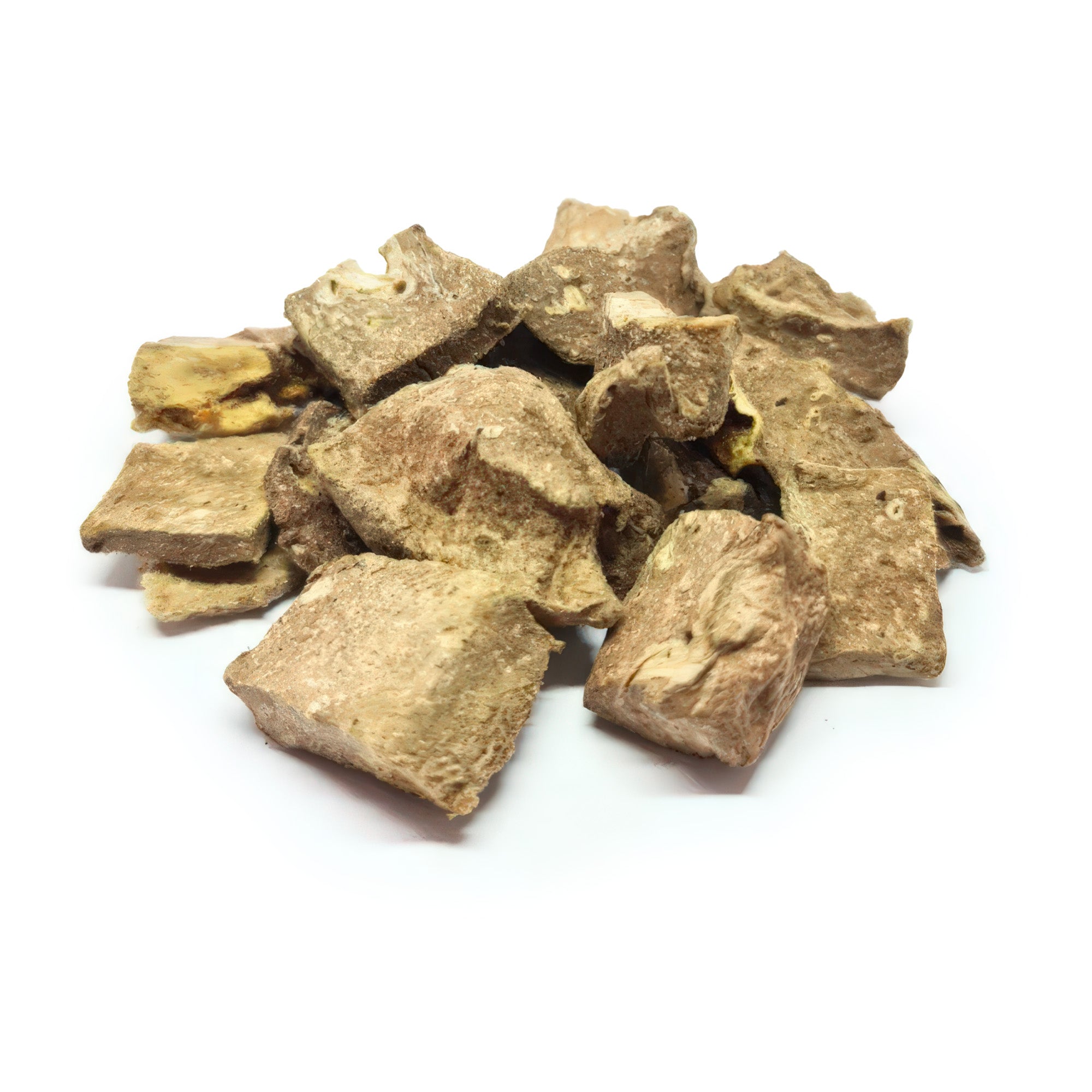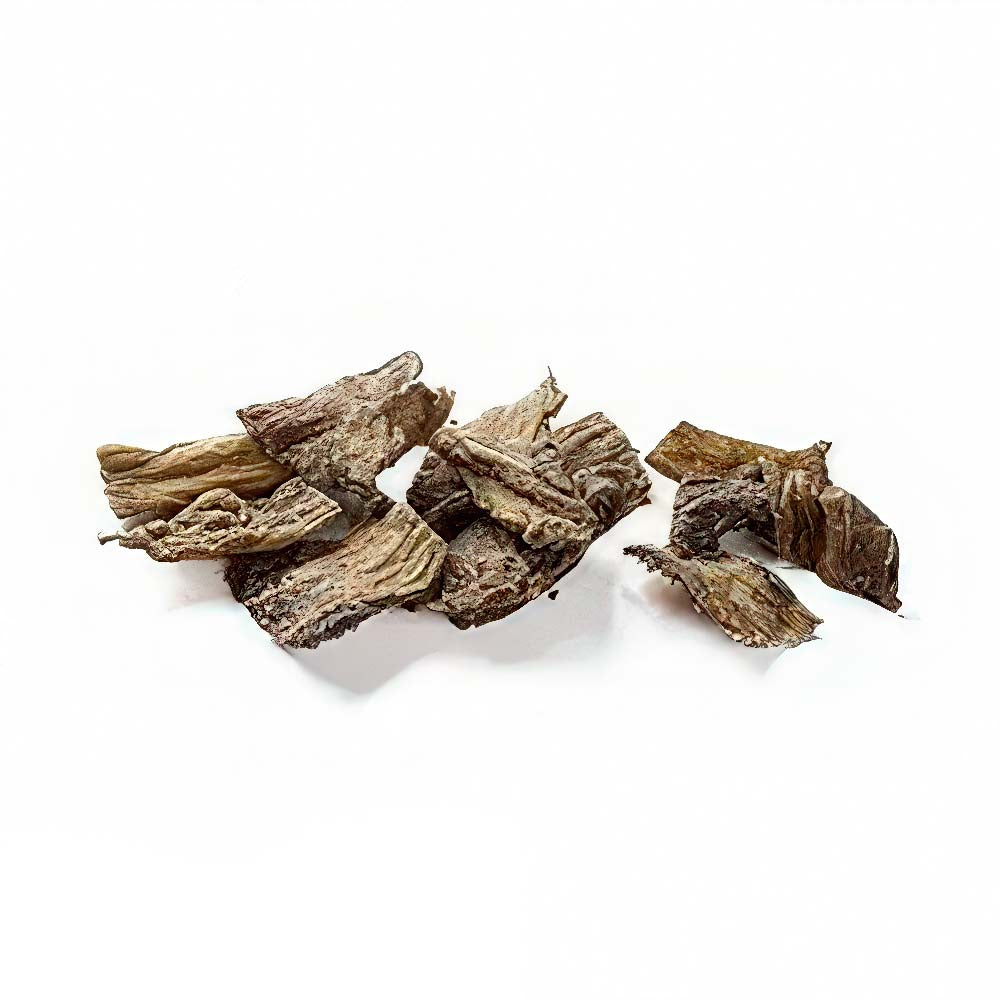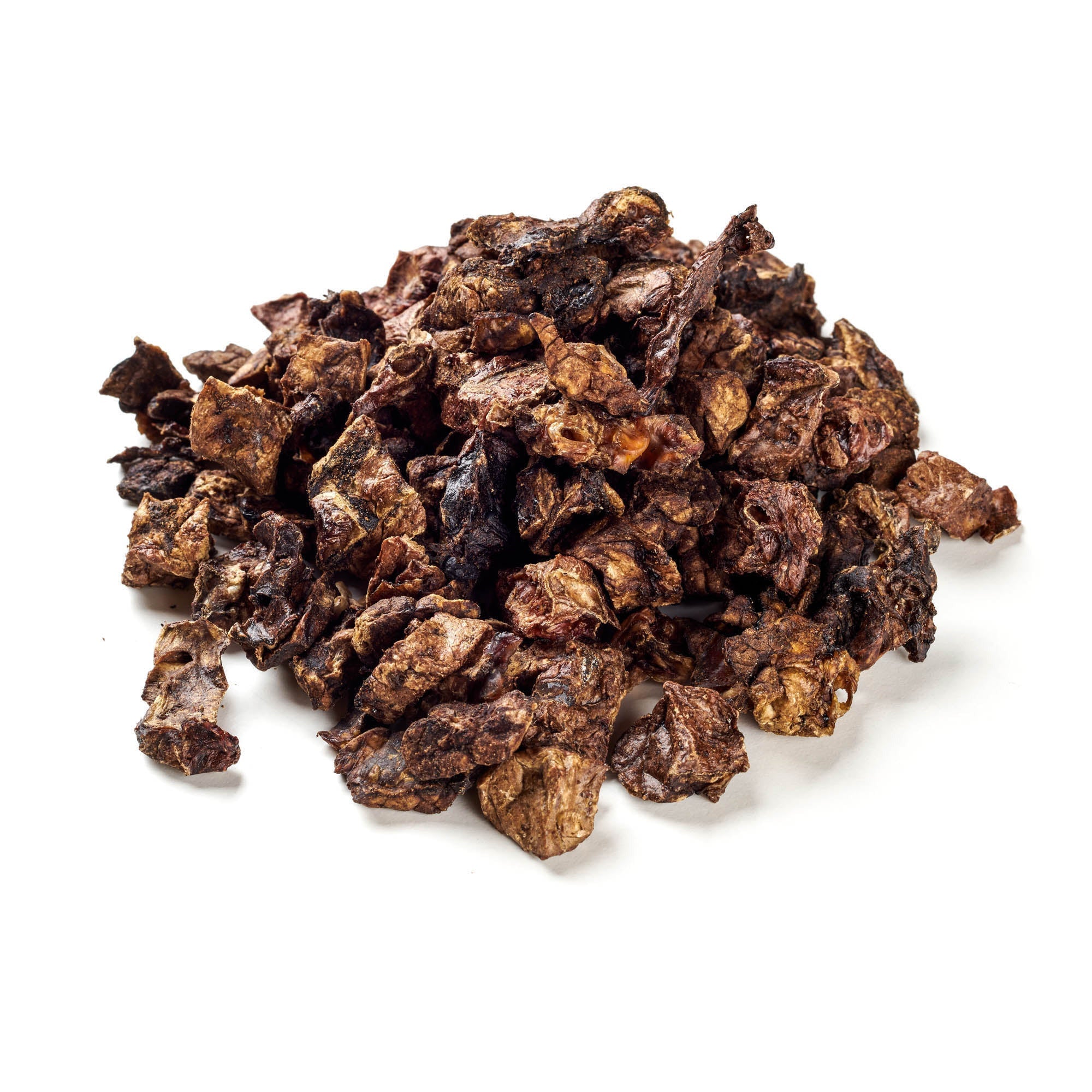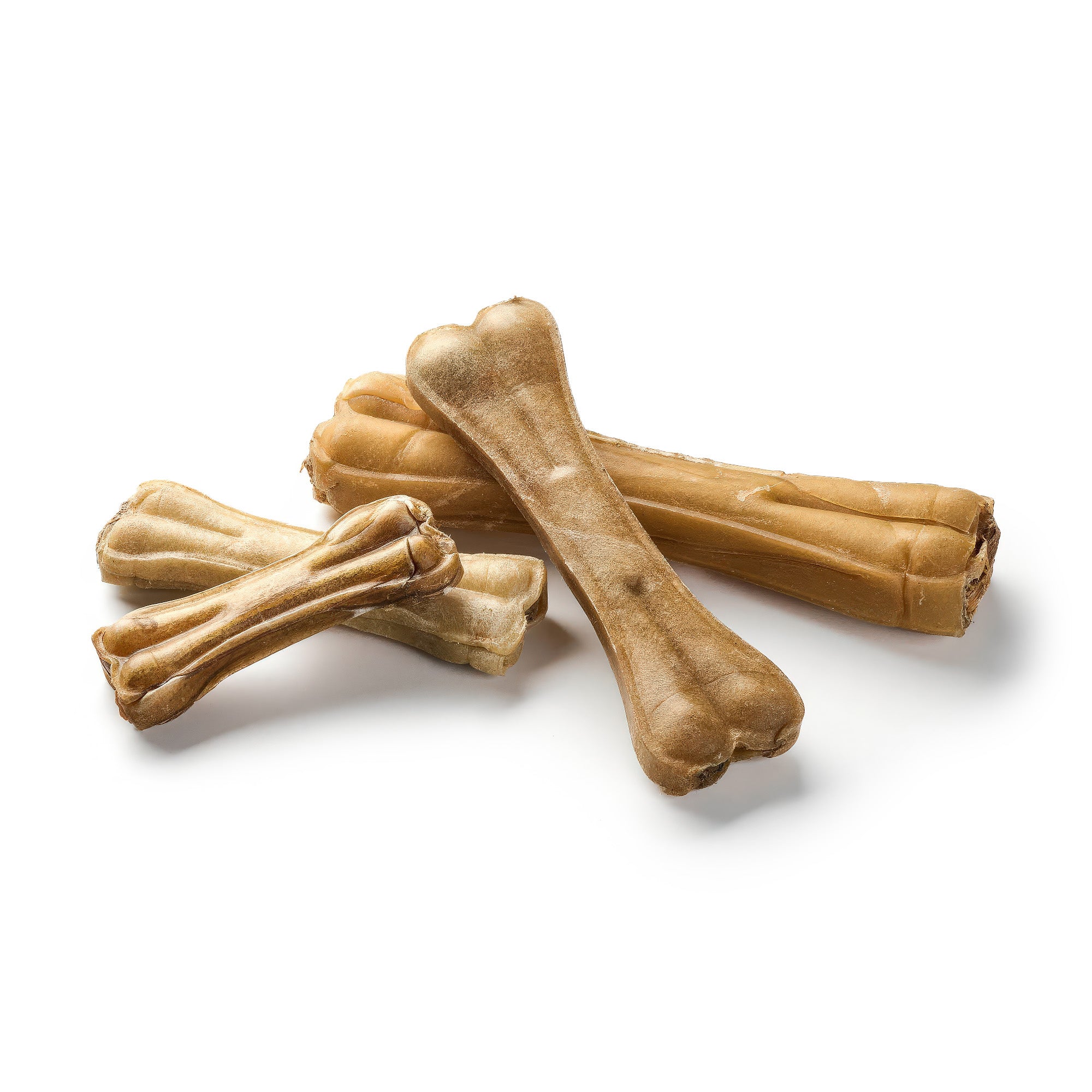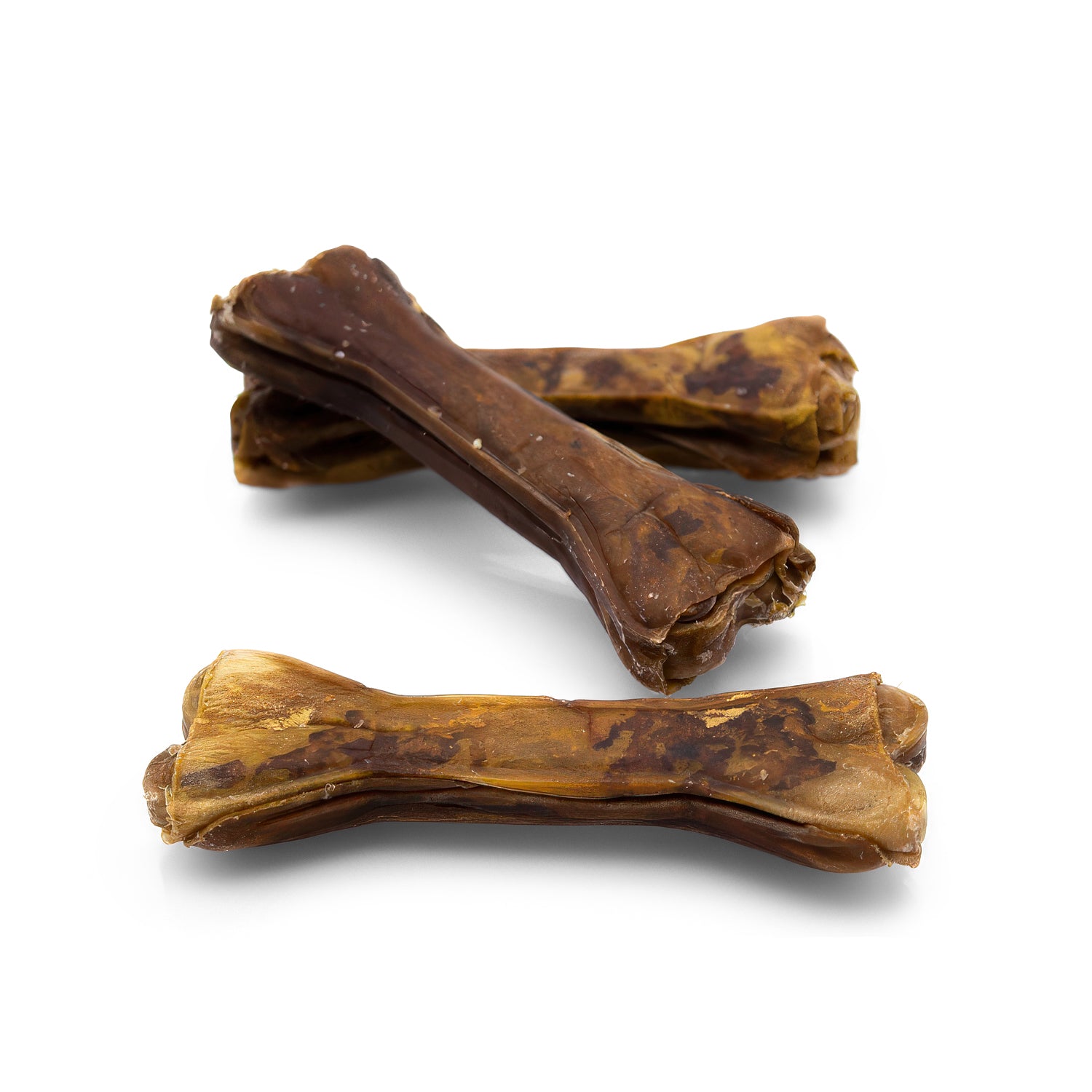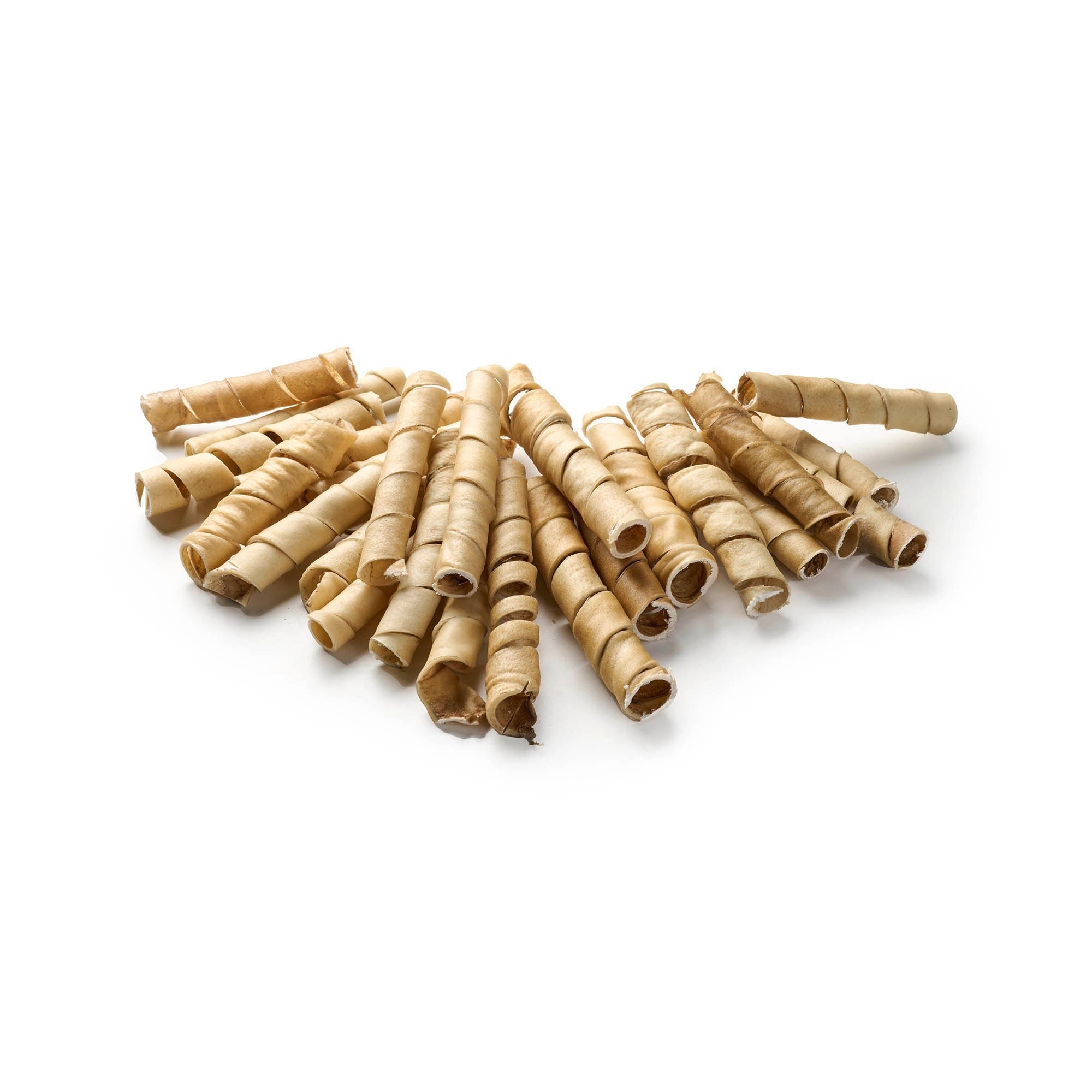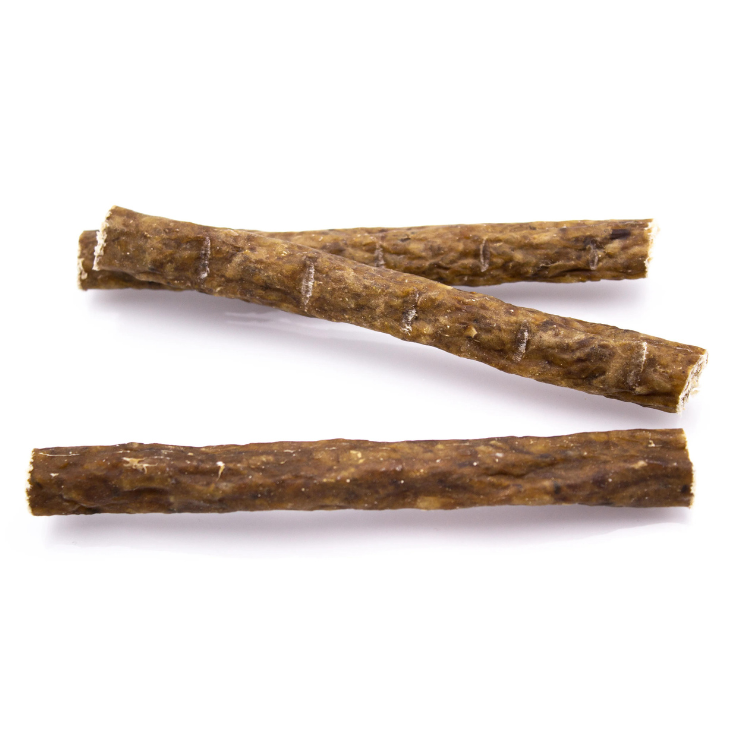
Cruel breeding - dog breeds that suffer
Share
Cruel breeding of dogs is a sensitive issue. Despite the ban and strict regulations of the breeding associations, the trade in dog breeds from cruel breeding seems to be flourishing. Although the animals suffer throughout their lives, neither breeders nor many buyers seem to really care. The focus is on their own wishes and ideas. A lot could be done, both by politicians and by anyone who buys a dog.
Content: Cruel breeding - dog breeds that suffer
First-class dog chews for happy sniffing noses available here!
Breeding in the making
When Gregor Johann Mendel published his research results on the "laws of heredity" in 1866, in which he reported on his breeding success with peas, it was not long before these findings were not only used in botany, but also in animal breeding. At the end of the 19th century, many of these breeding animals were farm animals and their modification had a benefit. A not insignificant factor in the prosperity in which we live today. Pets became increasingly popular and the trend towards breeding is also spreading to our beloved animals.
Since then, hundreds of dog breeds and many other pets have been created and enrich our lives. But the original goals, which many people find questionable, of "improving" the animals in some way or making them healthier, are no longer there. Today, our desire is to own the cutest creature possible. And so animal breeds are created according to people's ideas without considering any basic ethical or moral rules. They should look cute, beautiful, sweet or exclusive, but how they feel about it doesn't seem to be that important not only to many breeders, but also to dog owners.
There are fashionable breeds such as bulldogs, chihuahuas or pugs that serve as fashion accessories and can no longer fulfill their actual function as dogs. But many other dog breeds that you cannot immediately see suffer from breeding-related diseases .
Cruel breeding - these animals suffer
Dog breeds with brachycephaly
Brachycephaly is a breeding practice that results in the well-known snub nose, the protruding eyes and the overly round, broad head. The jaw is also very short. Through all these deformations of the teeth, airways, eyes, middle ear and even the brain, the dog is supposed to evoke affection in humans according to the classic baby schema.
Well-known dog breeds include the Chihuahua, Pug and French Bulldog.
The problem may not always be obvious, but often even the owner can see that these dogs are not healthy and studies among dog owners of these breeds have shown that many of these dogs suffer throughout their lives.
The health consequences are varied, but the most common symptoms are inflammation, shortness of breath and unconsciousness. However, misalignment of the teeth or dangerous middle ear infections can also be the result. The worst, however, is shortness of breath, which causes many dogs to have trouble sleeping. Some affected animals try to sleep sitting up because otherwise they cannot breathe. Since dogs exchange heat through panting, extreme heat is particularly dangerous for this breed of dog. The short nose is simply not enough to regulate the body temperature properly and this can lead to extreme exhaustion, unconsciousness, heat stroke and ultimately death of the dog. Even if affected dogs are relieved of this condition through surgery, there are still plenty of other health problems to contend with.
For example, teeth may fall out because their upper jaw is too short and doesn't have enough space. Their eyes are also prone to ulcers and injuries due to their unnatural position and size, as are the frequent infections in the ear canal and middle ear. And these are not isolated cases, as health data from England suggests that over 43% of all pugs examined have had at least one disease of the head or neck.
Teacup Dog Breeds
The term teacup dog does not refer to a breed of dog in its own right, but to small miniature dog breeds that have been deliberately bred, such as Chihuahuas, Yorkshire Terriers , Toy Poodles or Miniature Pinschers. The term teacup dog arose because the dogs are so small that they almost fit in a teacup. The particularly crude thing about these dogs and their breeding is that the small and weak animals are chosen for this purpose, even though they already carry an increased risk of hereditary diseases. In addition, dogs under two kilograms are actually prohibited by breeding regulations, but many dog breeders apparently do not adhere to them, otherwise there would not be so many of these dogs.
Even the birth of the small animals can be problematic, because the newborns are often simply too big for the mother dog. The proportions of the dogs are often not healthy and a head that is too big can lead to hydrocephalus.
In addition, in some dogs the skull cap, the so-called fontanelle, does not grow together completely, which means that the brain is unprotected in this area and under certain circumstances a simple blow to this area can have serious consequences.
But that's not all. Almost all other areas also show health problems. The eyes are particularly susceptible to infections. Furthermore, liver damage, jaw problems, cardiovascular weakness, weak bones, slipped discs and shortness of breath are not uncommon.
The Merle factor in the coat
They are among the most popular dogs and are admittedly very beautiful animals. Dogs with the so-called "Merle factor" have a patchy coat and often two different colored eyes.
Make your dog happy with our delicious snacks!
Well-known dog breeds here are Australian Shepherds, Collies, Shelties, Great Danes and also Dachshunds .
But what many people don't know is that this colorful coat is a genetic defect created through breeding, which not only ensures good looks but can also have serious health consequences.
This is especially true when two dogs with the Merle gene defect are mated. It is not uncommon for the animals to be deaf in one or both ears. The eyes are also affected by diseases and many of these dogs are even born blind. In addition, the bone structure, heart and genitals are often deformed. In the worst case, the puppies die before they reach sexual maturity.
Blue Line
Blue line or silver colored dogs are subject to a similar trend as dogs with a "merle factor". In this case, it is especially American Staffordshire, French Bulldog, but also Labradors that have a blue.
Charcoal, champagne or silver-colored fur. What looks beautiful at first glance has health consequences for the animals.
In order to create the special coat color, the diluten gene is bred into the dogs. But in addition to the color side effects, it can lead to coat loss, skin eczema, itching and poor wound healing. Heart damage or diseases of the immune system can also be a consequence.
Behavioral changes can also be observed and these animals are often unfocused, nervous and hyperactive. Some dogs suffer so much from the changes that a normal dog life is hardly possible.
Rhodesian Ridgeback
The characteristic that gives the dog its name is the "ridge". The Rhodesian Ridgeback has a piece of fur that runs along the spine, against the direction of growth. The problem with this is that it changes the spine.
In the embryonic state of the puppy, the spinal cord and skin are not separated from each other or are only separated incompletely, which results in cysts forming, which in turn become inflamed and can lead to life-threatening meningitis. It can also lead to paralysis of the hind legs.
English Bulldog
Inbreeding is a major problem for many purebred dogs, but the English Bulldog has been particularly affected by decades of inbreeding. It is believed that all purebred English Bulldogs descend from just 68 animals.
The ailments of the English Bulldog are accordingly varied. This breed of dog also suffers from a shortened head and an enormous deformation of the teeth, which causes difficulties when eating. They are so anatomically deformed that they can hardly manage to take care of their own body.
Even the birth of the offspring can often only take place by Caesarean section and caring for the newborns also presents problems. Another genetic disease is hip dysplasia. The underdeveloped hip joint impairs mobility and sometimes causes severe pain.
German shepherd dog
The German Shepherd, which is of course very well known in this country, is now also a result of cruel breeding . Over the decades, the herding dog has been so re-bred that its back now slopes far too steeply.
The reason is purely the visual needs of humans, but the consequences are sometimes serious health problems. Many animals have difficulty walking.
In addition, there is hip dysplasia, which leads to painful remodeling processes in the hip joint, especially in old age. Ligaments, tendons, articular cartilage and joint capsules are damaged. In order to cope better with the pain, the dogs tend to adopt misalignments to relieve the painful joints.
However, this causes new damage to the spine or the front limbs. A cure is not possible and the quality of life is almost non-existent.
Dachshunds & Teckels
Dachshunds and Teckels are hunting dogs that were bred to have short legs so that they could fit better into the burrows of rabbits and foxes. Although this purpose was fulfilled and made the two dog breeds popular animals, they have suffered greatly from their fate.
The problem is a malformation of the intervertebral column. Chondrodysplasia is a hereditary disease that affects cartilage and bone development to such an extent that growth stops. The result is dwarfism and short, misaligned legs.
Further consequences include a possible slipped disc or general pain in the neck and back. Paralysis can also occur in both the front and hind legs. This happens so often that there is a specific term for it: "Dachshund paralysis".
This is almost impossible to cure and affects the affected dogs so much that they can no longer walk independently.
Conclusion
If you take a closer look, it is really strange what we do to our beloved four-legged friends just so that they conform to our sometimes very questionable ideals of beauty. Of course, tastes differ here. But when it comes to animal welfare, most people agree and, together with widespread ignorance, this may explain the widespread use of cruel breeding of dogs. This makes it all the more important to educate people and also to appeal to friends and family's conscience.
Enjoy moments together with our delicious dog chews!

